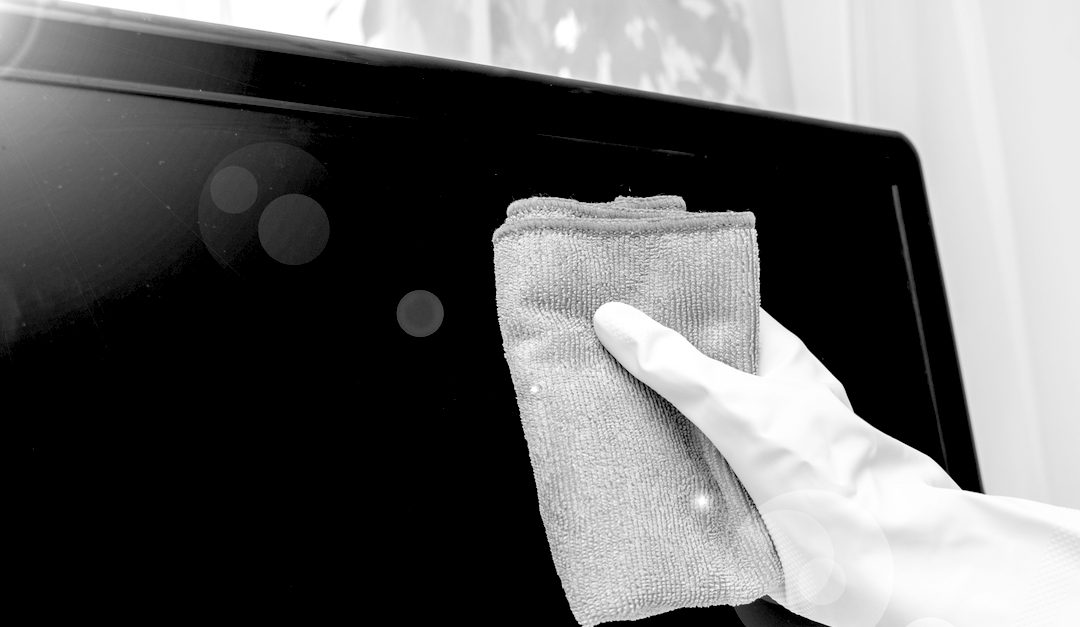Touchscreen Hygiene during the COVID-19 Outbreak
How to avoid damaging your touchscreen display without compromising on cleanliness
During the COVID-19 outbreak, it’s more important than ever to keep hardware clean and sanitary. While it is primarily spread from person-to-person, it’s also possible that a person can contract the virus by touching a contaminated surface or object, then touching their own mouth, nose, or eyes.
Although scientists are still in the process of gathering data about how long the COVID-19 virus can survive on surfaces, a recent study found that the virus can remain viable on plastic and stainless steel for up to 72 hours.
Whilst sanitising is essential, it’s also important to follow the correct procedures for cleaning your touchscreens in order to avoid damage. Here, we outline some useful advice shared by our partners Elo and AOpen on how to carry out a two-step cleaning process, and what products are safe to use on their touchscreen products.
Two-step cleaning process
Keeping your device safe for use involves a two-step process of cleaning, followed by disinfecting. Cleaning removes dirt, grease, dust and other contaminants. Disinfecting is a separate process that uses a chemical cleaning product designed to kill the virus.
Step 1 – Cleaning
To prepare the touchscreen for cleaning, power down the device if possible, or ensure your on-screen software can tolerate false touches while you clean.
We recommend using a clean, dry cloth or non-abrasive cleaning wipes. Do not get liquids inside the unit or spray the product directly. Instead, use wet wipes, a sprayed cloth or a dampened cloth with the excess moisture squeezed off
Avoid highly concentrated alcohol (greater than 70% concentration), non-diluted bleach or ammonia solutions, as these may cause discoloration. Wipe the surfaces with the appropriate wipes or cloths and approved cleaning products, then allow them to dry.
Step 2 – Disinfecting
To disinfect your touchscreen, dampen a new clean, non-abrasive cloth with a disinfectant chosen from the list below. Ensure excess liquid is squeezed from the cloth. You may also use recommended pre-dampened wipes.
It’s important to read the manufacturer’s instructions carefully. Many manufacturers require the surface to remain wet for a few minutes, so continuous wiping might be required. Disinfect the surfaces by wiping them with the cloth or wipe, and allow the surface to dry. Use gentle wiping motions and avoid wiping or pressing the touchscreen with excessive force. Do not use sharp tools to clean the surface of the touchscreen.
Do not use air guns, water jets, or steam to clean the surface of touchscreens, as they may damage touchscreen functionality.
Approved products
Disinfectants recommended by the US Center for Disease Control and Prevention (CDC) that are safe to use on our touchscreen products are household bleach solutions (1/3 cup of bleach per gal. of water) and isopropyl alcohol (not exceeding 70% alcohol).
Cleaning products approved by the US Environmental Protection Agency (EPA) are:
- Clorox Disinfecting Wipes – Reg. No. 5813-79
- Clorox Healthcare Bleach Germicidal Wipes – Reg. No. 67619-12
- Clorox Commercial Solutions Hydrogen Peroxide Cleaner Disinfectant Wipes- Reg. No. 67619-25
- Lonza Disinfectant Wipes- Reg. No. 6836-313
- Lysol Brand Clean & Fresh Multi Surface Cleaner (20% cleaner solution to water ratio)- Reg. No. 777-89
- Purell Professional Surface Disinfectant Wipes – Reg. No. 84150-1
- Sani-Cloth Prime Germicidal Disposable Wipes – Reg. No. 9480-12
Do NOT use the following materials when cleaning/disinfecting your touchscreen: product
- Isopropyl Alcohol at concentration > 70%
- Methyl Alcohol or Ethyl Alcohol at concentration > 35%
- Thinner or benzine
- Strong alkali lyes
- Strong solvents
- Acids
- Detergents with fluoride
- Detergents with ammonia at concentration > 1.6%
- Abrasive cleaners
- Detergents with abrasives
- Formula 409
- Steel wool
- Sponges with abrasives
- Steel blades
- Cloth with steel threads
If any of this information is unclear or you need advice on how best to sanitise your products, contact us here >

